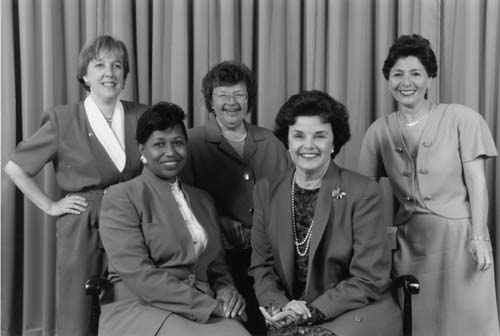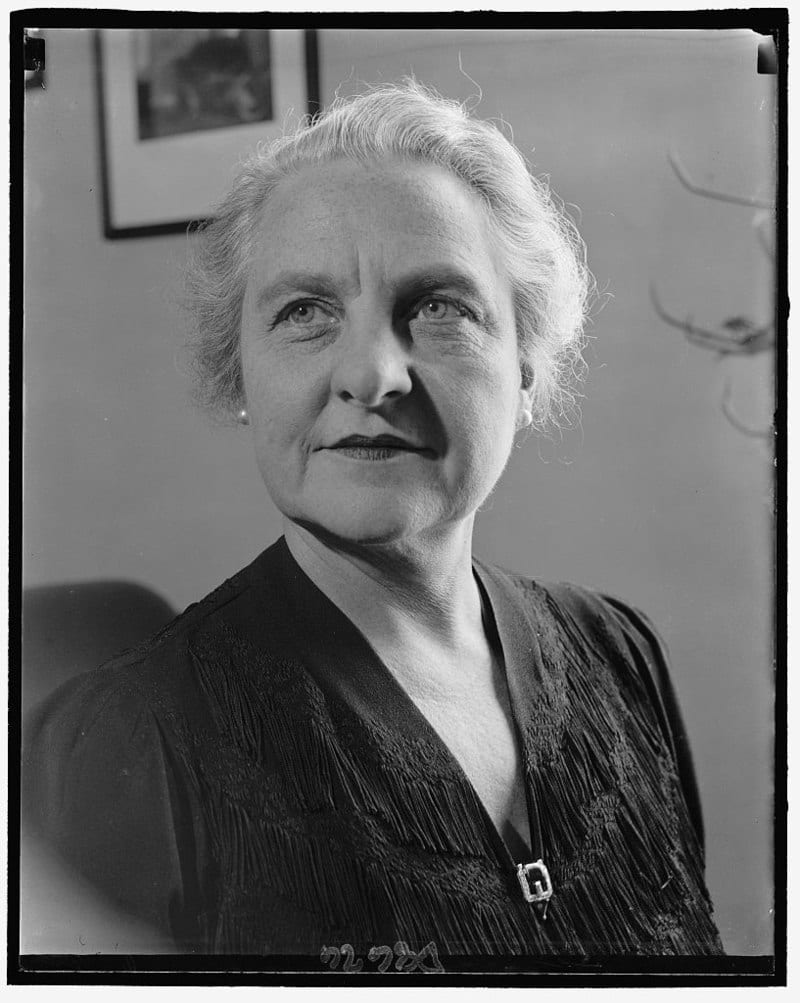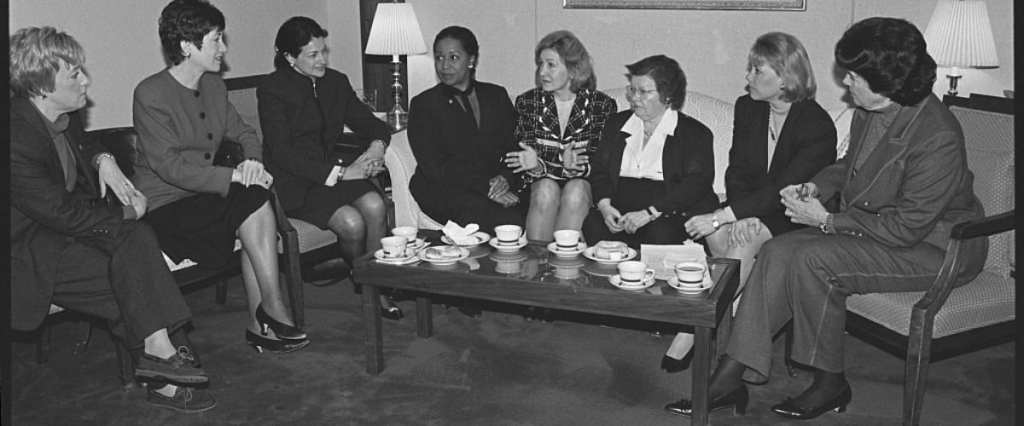I don’t know about you, but with pantsuits all the rage among high-profile female representatives these days, it never really occurred to me to wonder about a time when they were all but verboten on the Senate floor.
Which is silly, maybe, given that there were few public places prior to the 1970s where you would catch a woman wearing pants, but still – this is the 90s, we’re talking about. Bill Clinton was president.
But still women followed the unwritten “no pants allowed” rule.
That is, until one woman – the first African-American woman to serve as a U.S. Senator – went in for her first day of work.
Carol Moseley-Braun, the Democratic Senator from Illinois, hadn’t thought twice about donning one of her many pantsuits (her “nice outfit) and heading to the Capitol. When she arrived, however, “the gasps were audible” and she was left wondering what faux pas she’d committed on her very first day.

Image Credit: Wikipedia
It was her pants.
Since the beginning of the legislative branch, members have dressed in a dignified manner befitting the office, though no official dress code was written. And when women began to seek and win political office in 1912, they followed suit (heh), typically choosing dark colors and conservative cuts to eschew unwanted attention. The trend continued into the 40s, as more and more women joined the ranks of representatives. Reps. Mary Norton and Frances Bolton would even patrol female fashion choices on the floor.

Image Credit: Wikipedia
In the 1970s, slacks and pantsuits became acceptable office and formalwear attire, and were also allowed at federal agencies around the same time (except at the FBI, where J. Edgar Hoover reigned).
In 1972, Pat Nixon became the first sitting first lady to be photographed wearing trousers, and Rep. Charlotte T. Reid became the first woman to wear a “black wool, bell-bottomed pantsuit” in “the annals of the U.S. Congress.” One male colleague even told her he “was told there was a lady here in trousers, so I had to come over and see for myself.”

Pat Nixon
Image Credit: Wikipedia
The Senate, however, was much slower to embrace the trend of letting women wear whatever the hell made them the most comfortable.
It is perhaps not surprising, knowing what we know about the Senate, that even in the 1980s women were warned to dress appropriately before showing up for work – not just Senators, but temps, secretaries, or anyone else who might find themselves in the chamber.
“We’ve heard from women staff that in the 1980s, if they came in to work – if they were called in on an emergency basis – they needed to keep a dress to put on quickly or they had to borrow one if they had to appear on the Senate floor,” says historian Richard A Baker.
Though, again, it was not an official or written rule, the Senate employed “doorkeepers” that decided who did and did not look appropriate to appear. They were part security guard, part “protocol monitor,” and still today they make sure that everyone who enters is supposed to be there and is dressed appropriately.
A 1972 request for a written dress code, so that women weren’t thrown off by a different door monitor on any given day, was ignored.
By 1993, things were shifting. For the first, time, more than two women were serving Senate terms at the same time (there were 4). One of them was Moseley-Braun, who was simply unaware of the unwritten rule.
“It was one of those unwritten rules that they don’t tell you about unless you’re part of the circle. And nobody was talking to me about these things, so I had no clue.”
She might not have meant to start a revolution, but when staffers started to thank her for taking up the fight to wear pants on the floors, Moseley realized she had done just that.
“What happened next was that other people started wearing pants. All the women staffers went to their bosses and said, ‘If this senator can wear pants, then why I can’t I’ And so it was the pantsuit revolution.”
For what it’s worth, Senator Barbara Mikulski had also made up her mind to fight the outdated norm that same session, on a day when a bad snowstorm was forecast.
https://www.instagram.com/p/BRYj0RrAtkS/
“It was a snowy day,” she told Vice. “I found out more bad weather was coming. I just really wanted to be comfortable. I’m most comfortable wearing slacks.”
Aware of the tradition she would be flipping the bird, Mikulski went to Robert Byrd, president pro tempore of the Senate, and told him she would be wearing pants. After checking the official rules to make sure that pants on women weren’t explicitly outlawed, Byrd gave her the nod.
“He didn’t say yes,” Mikulski recalls, “but he gave a nod.”
Soon after, the Senate sergeant at arms, Martha Pope (the first ever woman to hold the job) amended the written policy manual from “women are required to wear business attire, i.e. dress, skirt and blouse, or business suit” to read “women are required to wear business attire, i.e. dress, skirt/blouse, business suit, coordinated pantsuit (slacks and matching blazer; no stirrup pants).”

Image Credit: Wikipedia
Gotta love the 90s for that last tidbit.
Though recent events suggest that there are plenty in Washington who would love to turn back the clock on many things – including the role of women in politics – pants, pantsuits, and powerful women aren’t going anywhere.






